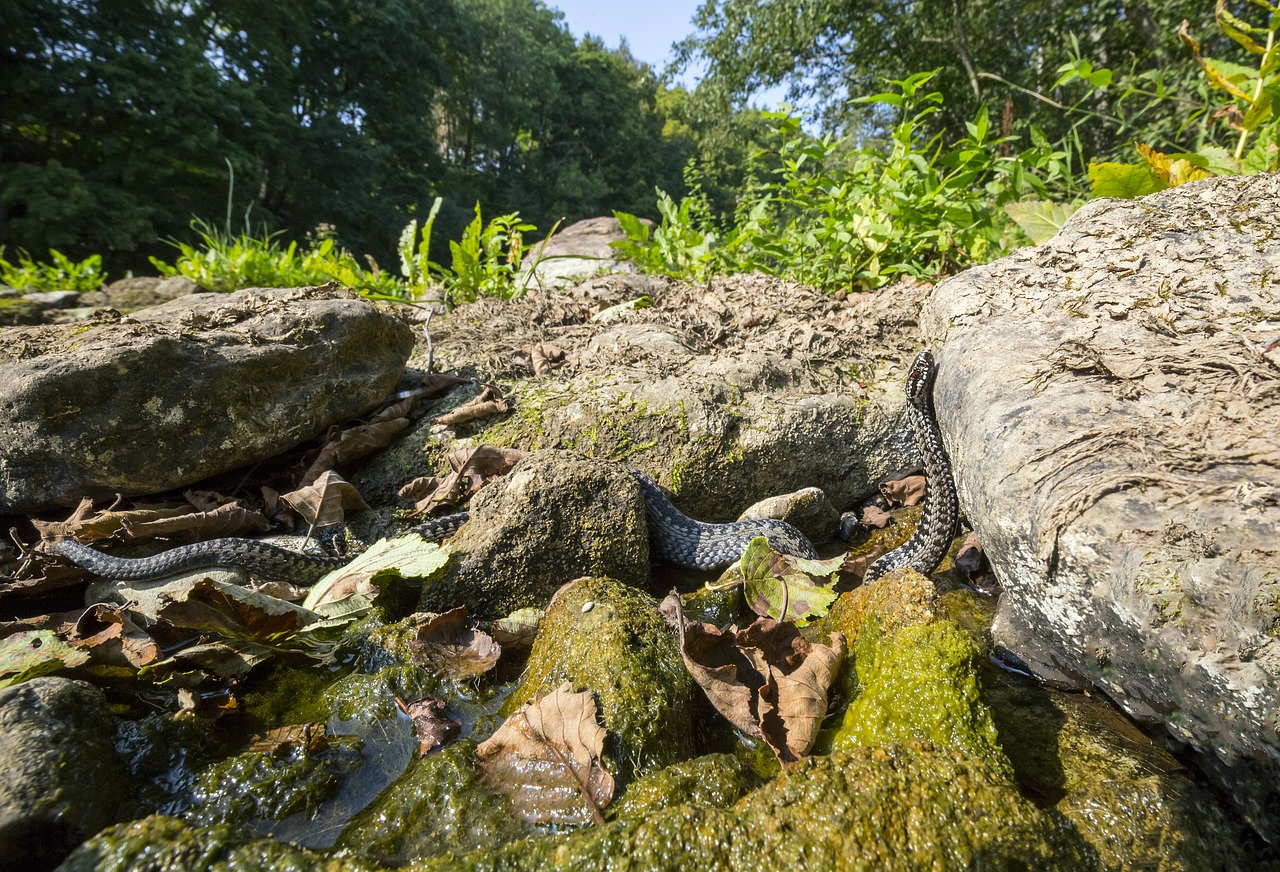The common European adder (Vipera berus), also known as the common viper, is a widespread and well-known species of venomous snake found across much of Europe and Asia. Here are some key details about this fascinating reptile:
Appearance
- Size: Adult adders typically measure 60 to 90 cm (24 to 35 inches) in length, though some individuals can grow up to 100 cm (39 inches).
- Coloration: They exhibit considerable variation in color. Most commonly, they have a grey or brown background color with a distinctive dark zigzag pattern running down their backs. Some individuals can be completely black (melanistic).
- Head: Adders have a somewhat triangular head with a distinct neck, and their eyes have vertical pupils, which is characteristic of many venomous snakes.
Habitat
- Range: The common European adder is found across a wide range, from the UK and Scandinavia to northern Italy and eastwards into Russia and Asia.
- Environment: They inhabit a variety of habitats, including woodlands, heathlands, moorlands, and meadows. They prefer areas with dense ground cover and often bask in sunny spots.
Behavior
- Diet: Adders primarily feed on small mammals like mice and voles, but they also eat birds, lizards, amphibians, and insects. Juvenile adders often start by eating smaller prey such as insects and small amphibians.
- Reproduction: Breeding occurs in the spring. Females give birth to live young (viviparous) in late summer, typically producing 5 to 20 offspring. The young are born fully independent.
- Activity: They are generally diurnal, being most active during the day, especially in the cooler months. In hotter weather, they may become more crepuscular (active during twilight) to avoid the heat.
Adaptations
- Venom: Adders possess venom primarily used for subduing prey. While their bites can be painful to humans and can cause swelling and nausea, they are rarely fatal to healthy adults. Medical attention should be sought after a bite.
- Hibernation: In colder climates, adders hibernate during the winter months, often in communal dens. They emerge in early spring as temperatures rise.
Conservation
- Status: The common European adder is classified as “Least Concern” by the IUCN, but local populations can be threatened by habitat loss, persecution, and traffic on roads.
- Protection: In many countries, adders are legally protected. Conservation efforts focus on habitat preservation and public education to reduce unnecessary killing of these snakes.
Ecological Role
- Predator-Prey Dynamics: As both predator and prey, adders play a crucial role in their ecosystems. They help control populations of small mammals and are a food source for larger predators such as birds of prey and mammals.
- Biodiversity Indicator: The presence of adders can be an indicator of a healthy, biodiverse environment, as they require a well-balanced ecosystem to thrive.
The common European adder is a resilient and adaptable species that plays a vital role in the ecosystems it inhabits. While often misunderstood and feared, it is an important part of Europe’s natural heritage.
Visited 819 times, 4 visit(s) today
Views: 928
Subscribe to the newsletter:
